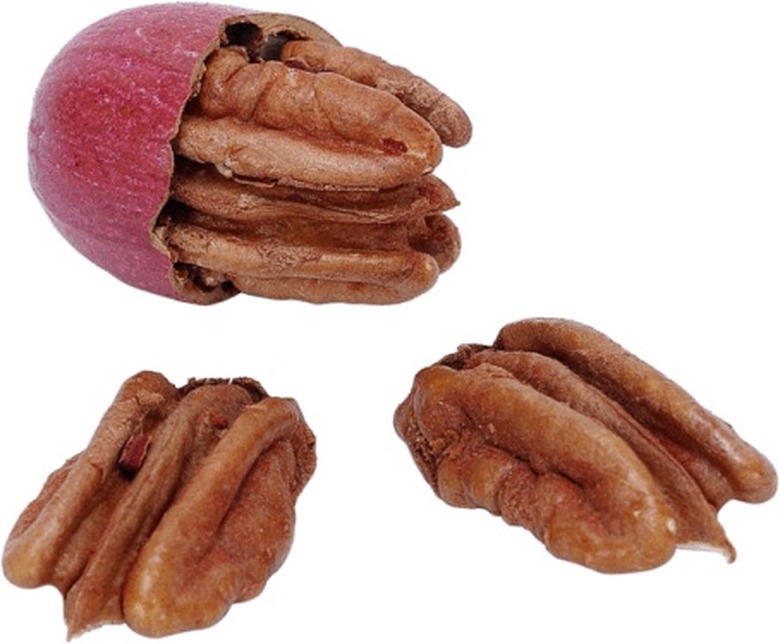Why Does My Pecan Tree Produce Rotten Pecans?
The nut of the pecan tree is prized for its sweet taste and consumed as an out-of-hand snack or utilized in desserts and other dishes. So a tree producing rotten pecans is a definite disappointment. One disease, in particular, is especially damaging to the nut, while several insect pests can also rot away this delicacy.
Pecan Scab
A large number of pests and diseases can afflict the pecan tree, causing a significant reduction in the quality of the nut. One of the most damaging is pecan scab caused by the fungus Cladosporium caryigenum. This disease causes black spots on both the fungus and the nut husks of the pecan. It initiates with the development of olive-green or dark lesions; eventually the illness may overtake the entire nut, turning the husk completely black and forcing it to be aborted from the tree.
Scab Effects
The fungus is self-perpetuating as it overwinters in infected leaves, nuts and husks that have fallen to the ground, then reinfects a new generation of leaves and pecan nuts in the spring. The disease can be especially widespread if the spring or summer is overly wet; this increases the number of spores released into the air from infected leaves and nuts. Therefore, it is vital that infected leaves, nuts and husks be removed and destroyed each fall.
Stinkbugs
Insects can also cause the pecan to rot. Stinkbugs cause small black spots on the meat of the nut. They overwinter as adults and lay eggs that can produce as many as five generations annually. The stinkbug feeds on the pecan nut causing two forms of damage: black pit and kernel spot. Black pit occurs when the tissue of the nut becomes discolored and falls prematurely from the tree, while kernel spot is present when the area underneath the spots turns whitish and porous to the eye.
Other Insects
The hickory shuckworm also overwinters as larvae in the shucks of nuts. Adult shuckworms are dark brown or gray moths, approximately 3/8 inch long. The larvae tunnel into the shucks, depriving the pecan nut meat of water and nutrition. Emerging in June, they infest pecans throughout the growing season. Afflicted nuts will be scarred, mature late and show poor quality. Another pest, the pecan weevil, chews through the husk of the nut, where the female deposits eggs inside; hatched larvae then feed on the pecan nut meat.
